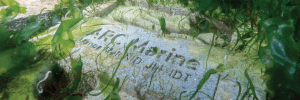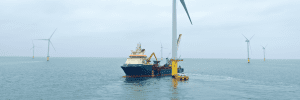Why has the UK’s native oyster population reduced?
Once abundant along Britain’s coastline, native oyster reefs have declined by more than 95% over the past century.
The reasons are many: over-harvesting, declining water quality, disease and the loss of suitable seabed habitat.
Oysters thrive in stable, complex reef structures where young “spat” can settle and grow. But when these habitats are dredged, trawled or smothered by sediment, recovery becomes almost impossible. Without a solid foundation, the oysters simply have nowhere to attach and the cycle of loss continues.
How is the Wild Oyster Project restoring oyster habitats?
The Wild Oyster Project, led by the Zoological Society of London (ZSL), Groundwork North East & Cumbria and the Environment Agency, aims to reverse that decline.
Working along the North East coast at Whitburn, the team is creating new oyster reefs that replicate the natural complexity once found there. The approach combines modern marine science, coastal engineering and community involvement.
More than 4,000 adult oysters, 35,000 juvenile spat and 40 tonnes of repurposed shell cultch have been introduced to the site, creating the base for a living reef system that will grow and evolve over time.
As the oysters mature, they’ll filter vast volumes of seawater, improve water quality, and create vital habitat for other marine life. from crustaceans to juvenile fish.

What role do ARC marine’s Reef cubes® play in oyster restoration?
Traditional oyster restoration often uses loose shell or rock, which can shift or wash away in exposed conditions. The Wild Oyster Project needed something more stable, a structure that could withstand currents and storms while still encouraging natural colonisation.
ARC marine® supplied 20 large Reef cubes®, each made from Marine Crete, our low-carbon, plastic-free concrete designed for long-term marine stability. Standing 1.5 m high and weighing 6 tonnes, these reef modules create both surface and shelter, the perfect environment for oysters to settle, grow and reproduce.
By combining engineering precision with Nature-Inclusive Design (NID) principles, the Reef cubes® act as a secure foundation for the developing reef, providing the missing structure that helps kick-start ecological recovery.
What difference will it make?
Oyster reefs are often described as the “rainforests of the sea”, they are ecosystems that filter water, protect coastlines and support an extraordinary range of life.
By restoring these habitats, we’re not only rebuilding oyster populations but also boosting biodiversity, strengthening coastal resilience and improving water quality for generations to come.
The Wild Oyster Project shows what’s possible when engineering and ecology work together, delivering scalable, science-driven restoration with real, measurable impact.
Where else can Reef cubes® be used?
Reef cubes® aren’t limited to oyster restoration. Their modular, scalable design means they can be applied across a wide range of marine and coastal environments, from intertidal zones to subsea coastal habitats and coral reef recovery projects.
Each cube is made from Marine Crete®, a low-carbon, plastic-free concrete engineered to perform in the harshest marine conditions. The geometry and textured surfaces create interstitial spaces that provide shelter and attachment points for marine organisms, from oysters and crustaceans to fish and algae.
Reef cubes® have been tested and deployed in both intertidal and subsea environments.
- In intertidal settings like Southwick Reef at Shoreham Port, they create accessible, educational habitats that bring biodiversity back to working coastlines.
- In subsea environments like REFAS in Torbay, our Reef cubes® have been underwater for several years and are now abundant with marine life, including catsharks, lobsters, crabs and shoals of juvenile fish.
This versatility means Reef cubes® can be tailored to a wide range of applications, from oyster restoration and coral reef regeneration to biodiversity enhancement for offshore scour protection, as well as both intertidal and subsea coastal defence.
By combining different sizes of Reef cubes®, we can create varied reef structures that support an extraordinary spectrum of marine life and restoring habitat.

What is Nature-Inclusive Design (NID)?
Nature-Inclusive Design (NID) is an approach that ensures marine and coastal infrastructure provides ecological value as well as engineering performance.
Instead of building structures that simply withstand nature, NID encourages solutions that work with it, integrating habitat features, complexity and materials that support marine life.
ARC marine® helped shape this emerging field, contributing to the development of PAS 1401:2025, the British Standard for Nature-Inclusive Design in the marine environment. Every Reef cube® is designed to meet these principles, combining measurable biodiversity benefits with proven structural integrity.
By embedding NID into the foundation of marine projects we can accelerate the restoration of ocean ecosystems on an unprecedented scale.
Learn more about the Wild Oyster Project →
Explore Nature-Inclusive Design (NID) →




